
NOTE: Another submission by my friend in Sweden, Billie Biscayne. She previously wrote a column on the Chrysler Plainsman ‘dream car.’ If you missed that one, check it out here. Cheers. -TK
This is the tale of one of the most ostentatious and flamboyant neo-classic luxury “rat rods” ever created, and some of the eccentric, unorthodox and rather dubious owners it has had since 1971!
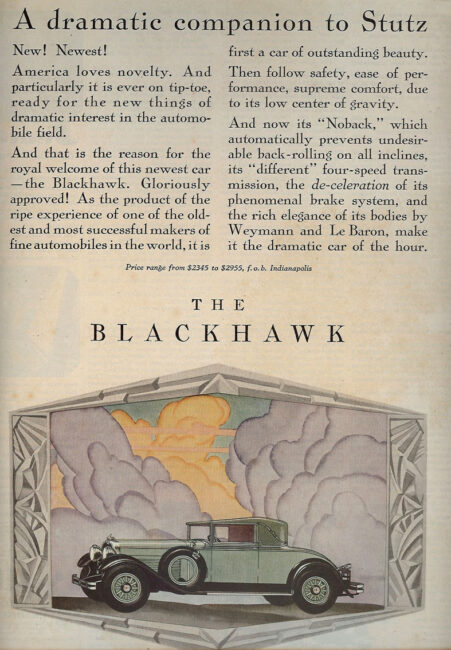
It all started in the late 1800’s with an Ohio farm boy who had a natural talent for engineering. Harry Stutz assembled his first gasoline powered vehicle, a creation he called “Old Hickory”, mainly from bits and pieces of old farming equipment. One can only assume that he refined these skills somewhat over the years as he later went on to become the founder of The Stutz Motor Company (originally Ideal Motor Company) in 1911. The first car rolled off the production line in Indianapolis, Indiana, that very year and Stutz Motor Company continued to build high-end sports and luxury cars, like the Bearcat and the Blackhawk, there until 1935 when they unfortunately became yet another automobile manufacturer to succumb to the Great Depression.
It would take another 33 years before they would experience a rather unexpected revival led by legendary Virgil Exner, the designer credited for the Forward Look he created for the 1955-1963 Chrysler products. However, by 1964, Exner had been fired from Chrysler due to the rather bizarre design of Chrysler’s bottom-line models in 1962 and he had resorted to drawing revivals of famous classics such as Duesenberg, Stutz, Packard and Bugatti in his downtime. These designs were published in Esquire Magazine and Exner began to consider actually producing one of these “revival cars”, combining American engineering with the superior artistry of Italian coachbuilders. Financing was provided by James D. O’Donnell, a prominent New York businessman and investment banker who had fond memories of driving a classic Stutz and decided to use that brand for the revival as he believed the brand name was now in the public domain. In 1968 Stutz was resurrected and the first model was to be called the Blackhawk! The Blackhawk’s design came from merging the designs of the revival Stutz with the revival Duesenberg. Only 26 of the distinct split-windshield “Series I” Blackhawks were built in 1971. They had all started their lives as a Pontiac Grand Prix before being shipped to Carrozzeria Padane in Modena, Italy, where they were basically stripped bare down to the chassis and driveline, thus keeping the 455cui Pontiac Grand Prix V-8 with 325hp, and the GM TH400 three-speed automatic transmission. The metal bodies were handmade at eye-watering expense and have no panel gaps. The body is one seamless form, with only the necessary cutouts for the doors, hood and trunk. An average of 1500 man hours went into the production of each car!
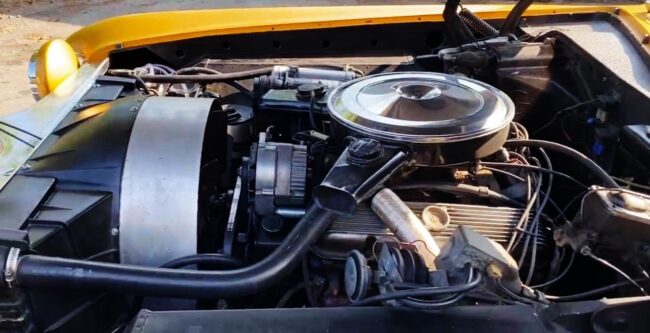
Carrozzeria Padane mainly constructed buses and campers, but alongside the Blackhawk, they also built production Maseratis such as the Mistral, Indy and Bora, and other cars such as Ferrari and Alfa Romeo. Interestingly, the Series I Stutz Blackhawk therefore contains many Maserati parts, including door handles, seats and gauges which are from a Maserati Indy. The rear glass on the Blackhawk is from a Ferrari, and other items taken from the parts bins of Northern Italy were lights and fixtures used on Innocenti, Alfa Romeo and the Lancia Stratos. The quirky design certainly wasn’t lacking Exnerisms – a massive chrome chunk of a grille, ornamental side pipes inspired by the Deusenberg, freestanding headlamps à la Imperial and a spare tire that protruded through the trunklid – the fuel filler cap is oddly positioned inside the spare tire on the first models.
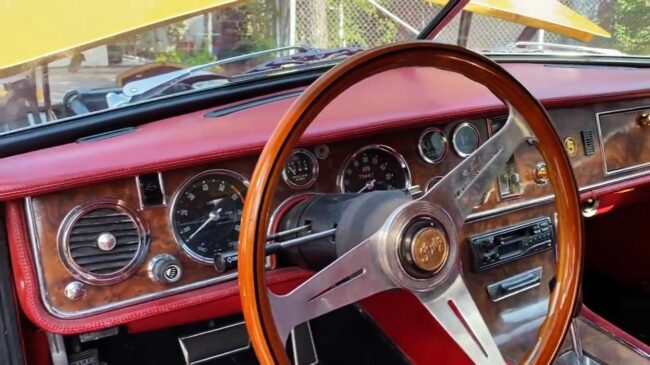
The Series I Stutz Blackhawk was also equipped with every imaginable luxury feature inside. This included electric windows, air conditioning, central locking, electric seats, Ducellier window switches, Connolly leather interior, 24k gold bezels and moldings, bird’s eye maple and redwood features throughout the interior, floor coverings made of Australian lambs’ wool, a built-in liquor cabinet, mink fur trunk lining (at the expense of 200 minks per trunk)! Luckily for Exner PETA wasn’t around back then…
The original radio for the 1971 Blackhawk was a Lear AM/FM 8-track, (Lear as in Lear Jet!), the most costly car audio system on the market 1971.
Unsurprisingly, the most expensive car in the world in 1971 was not a $19,000 Rolls-Royce or a $20,000 Lamborghini Miura. It was a Stutz! With a price-tag of around $30,000 it was almost ten times the annual wage in 1971!
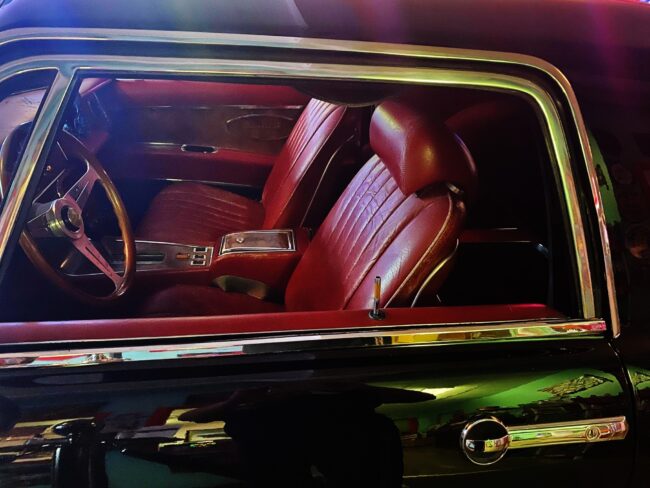
With the small amount of cars built and the extremely high cost of building each one, we can only assume that Stutz were not expecting to make a huge profit their first production year, and they subsequently lost approximately $10,000 per unit before O’Donnell concluded that shipping complete Pontiacs to Italy only to scrap the majority of each one wasn’t the best business plan. From 1972, all subsequent Stutz models used significantly more of the donor car’s substructure.
The original idea when launching the 1971 Stutz Blackhawk was probably more likely to have been to create a hype around the brand which certainly succeeded! Stutz very quickly became a favorite of the Hollywood stars. The likes of Lucille Ball, Sammy Davis Jr., Dean Martin, Liberace, Johnny Cash and Elvis Presley all owned a Stutz. Elvis was known for his love of cars, especially Cadillacs, but he apparently said he preferred to be driven in a Cadillac, while he preferred to drive a Stutz! Elvis was said to have bought four Stutzs, a black 1971 Stutz Blackhawk prototype, a black 1971 production car, a white 1972 and a black 1973. The 1971 production car was later gifted to Dr. Elias Ghanem, house doctor for the Las Vegas Hilton and the personal physician of Elvis Presley. Dr. Ghanem later had it painted white.
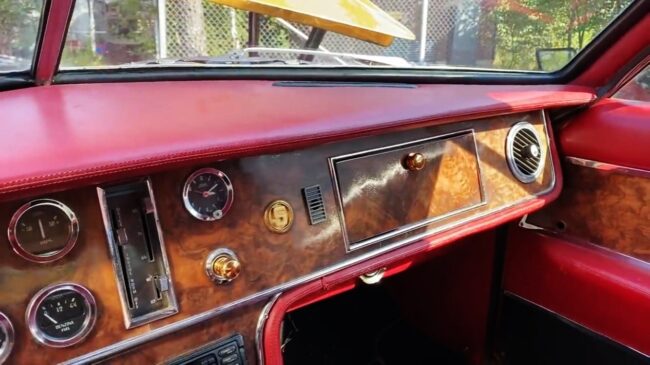
The first Stutz Blackhawk prototype was constructed in 1969 and had its debut at the Waldorf-Astoria Hotel in New York. A second followed a few months later, intended for the auto show circuit, and was entrusted to a dealer in Beverly Hills, California. Elvis was shown the prototype (nr. 2 out of 2) and immediately wanted to buy it, but it was going to be shown at the 1970 Los Angeles Auto Show a couple of days later and the dealer told Elvis he would need the car for that, which was fine with Elvis who also agreed to take some press-pictures with the car which was obviously good publicity for Stutz. Rumor has it that Frank Sinatra was another prospective customer, but as luck would have it, Ol’ Blue Eyes didn’t want any publicity shots taken with the car, whereas Elvis didn’t mind, as long as he got the car! In October 1970, after the Los Angeles auto show, the keys were handed to the King and he enjoyed this car until July 1971 when a hired driver unfortunately destroyed it.
The first prototype (nr. 1 out of 2) was driven by James O’Donnell himself. The most significant detail of the prototypes compared to the production cars that were produced starting in 1971, was the big rear-window. Only the two prototypes had the large size rear window.
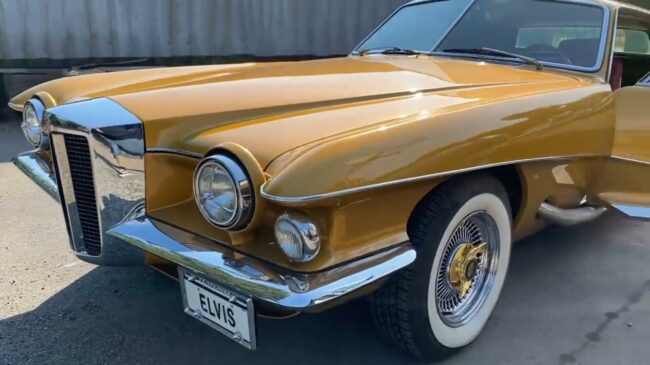
The same car, the current owner had it repainted black.
A mere 14-16 of these rare and historically significant Series I cars have survived. One was brought to Sweden by Bruno Tillander, a Swedish Elvis fan who emigrated to the States in the mid 1970’s in pursuit of Elvis memorabilia and material for a book he later wrote about Elvis after actually managing to get interviews with many people close to Elvis. When Tillander returned to Sweden he started a globe-trotting Elvis museum that toured more than 30 countries in the 10 plus years it operated, stopping at more than 300 cities for two weeks at a time showing amongst other things Elvis’s last Harley Davidson, his film outfits, a collection of gold jewellery and the 1971 Stutz Blackhawk. Tillander later sold the car to Bengt Dahlgren, another Stutz enthusiast in Sweden. Originally the car was painted tan/beige-metallic, with a beige interior, but was black with a red interior while touring with the Elvis museum.
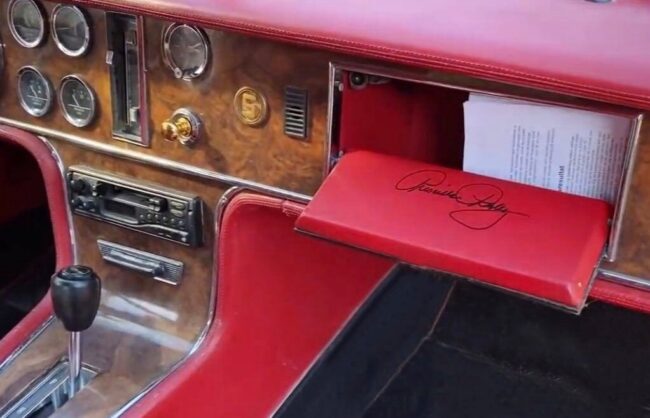
In 2005 Dahlgren restored the Blackhawk and recolored it a golden color. His most interesting contribution to the car is probably a slight modification to the glove compartment! When Priscilla Presley’s memorial concert for Elvis called “The Wonder of You” reached Malmo in 2017, he removed the flap of the glove compartment, brazenly approached Priscilla for an autograph, and succeeded! The autograph is still in place when you open the glove compartment!
This car changed hands in 2020 and is now on display at one of the world’s foremost museums for American classics, World of Classics Museum in Stockholm, Sweden. It is now once again black with a red interior! Realizing that one of these iconic cars was residing a mere 200 miles away, it was a no-brainer to do some research and head up to Stockholm to see the car! And it turns out the story behind the car was far more fascinating than first anticipated!
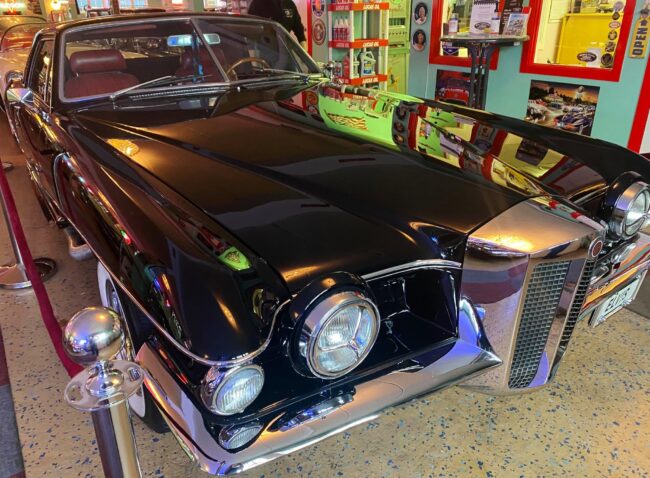
The 1971 Stutz Blackhawk displayed at World of Classics was first purchased by George I. Norman Jr., a millionaire financier and investor, and a colorful (and rather shady) character to say the least! (You don’t get deemed “America’s greatest living criminal genius” by Esquire magazine in 1997 for nothing)! With charm and movie star good looks, he rubbed elbows the big names of Hollywood – he played golf with Bob Hope, gambled in Las Vegas with Chuck Connors and hosted the likes of Lucille Ball at his $1 million mansion in Salt Lake City. Unfortunately though, for the Rocky Mountain Bank in Denver, Norman was partly financing his lavish lifestyle by siphoning $500,000 from them…
He was caught and convicted for this crime and other tax-related charges, but on March 13, 1973, the day he was to receive sentencing and subsequently start a two-year prison term for misappropriation of funds, Norman abandoned one of his defense attorneys and then fled in an orange Pontiac LeMans convertible belonging to his other defense attorney! And he didn’t stop there! A few hours later he exchanged the Pontiac for a 1969 Cadillac he “borrowed” from his friend Edward C. Day, a Colorado Supreme Court judge, and disappeared for the next two decades! The Cadillac was found weeks later in Las Vegas and Day’s keys and a thank-you note came in the mail!
Needless to say, Norman’s defense attorney, Orrin Hatch, was never compensated for his work on the case. He apparently said: “I never did get paid. But I never billed him. I knew it was useless.”
Norman’s escape, however, didn’t stop IRS agents seizing his cars to sell off to satisfy creditors. Several cars were seized, a Jaguar, two Rolls-Royces, and four Stutzs! One tan 1971 2 door (most likely the car that is now located in Sweden), a burgrundy 1971 4 door (the only 1971 four door made which was later displayed in a museum in Sarasota, Florida, for many years before being offered for sale by RM in 2019), one burgrundy 1971 2 door and one 1972 Stutz. Norman also had a blue ’71 Stutz that was not seized as his son had time to move this car to another location before the IRS agents arrived.
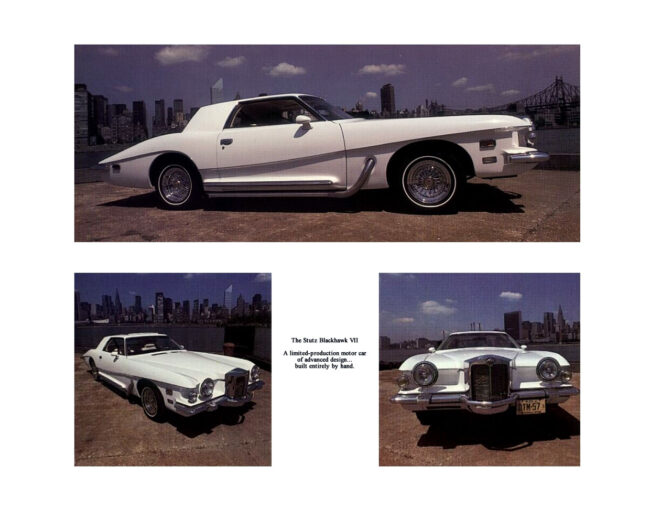
1979 Stutz Blackhawk VII
When federal marshals finally caught up with Norman in 1996 it turned out he hadn’t exactly been idle during his 23 years on the run! He had reportedly amassed $50 million through stock deals and legitimate companies in Houston and elsewhere, but he had (true to his trade) also swindled country club goers with penny stock schemes in several states. When apprehended Norman was driving a luxury motor home, a $180,000 Monaco Dynasty, towing a matching green, late model Lincoln Continental adorned with a rather charming bumper sticker that read: ”Prayer Changes Things.” One of the US marshals who arrested Norman said ”He was wearing a solid gold Rolex and had a fistful of $100 bills”. And he also had a pretty young wife, 30 years his junior, whose deceased grandparents’ names they had been using while on the run!
Mr. Day, the Colorado Supreme Court judge, was apparently still annoyed about the Cadillac incident 23 years later when he was interviewed in connection with the arrest of Mr. Norman…
After serving one year of his sentence, Norman was paroled because of failing health from prostate cancer. He died in March 2006.
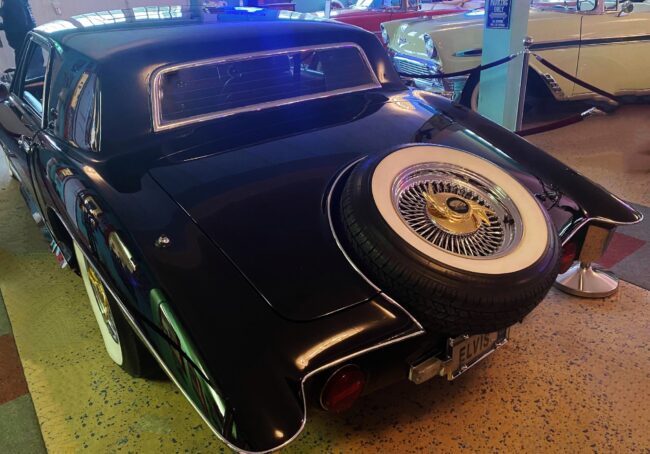
Remember Mr. Tillander who first brought the 1971 Stutz Blackhawk to Sweden? Well funnily enough (maybe not for Tillander), he also got into trouble with the IRS, albeit the Swedish version. He published his book about Elvis in 2015, but the book received scathing reviews to say the least – poor language, factual errors, deplorable literary level, spelling mistakes and the usage of words previously unknown to the Swedish language. Painfully aware that a career in writing wasn’t on the cards for him, Tillander instead entered the entertainment business where he organized mini-concerts in malls that featured famous Swedish entertainers, followed by meet & greets and autograph-signings. Regrettably for Tillander (and the 19 very famous Swedish entertainers he brought down with him) all business was conducted off the book, cash in hand, and the IRS soon caught up with them. Tillander spent a year in jail while the entertainers avoided custodial sentences. They did, however, have to pay hundreds of thousands of dollars in back tax!
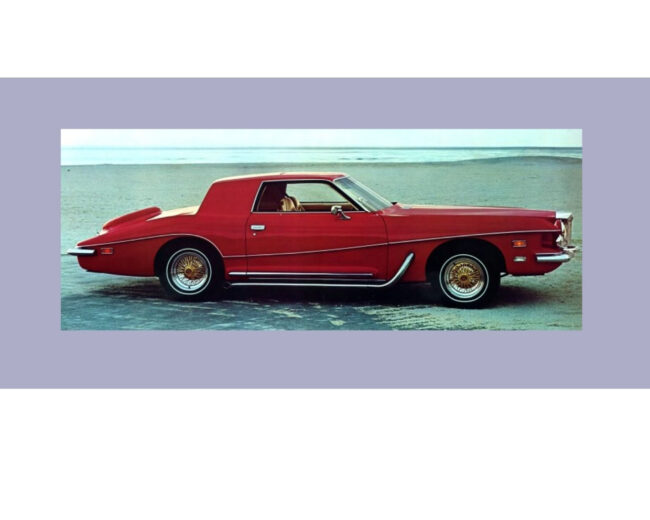
1979 Stutz Blackhawk VII
Dubbed everything from “The Frankenstein of ultra-luxury cars” to “One of the most uniquely stylish Italian-American hybrids” this car is certainly as outlandish and unconventional as at least two of its previous owners! It’s one of those “either you love it or you hate it” kind of cars, but unlike most other luxury cars, with Stutz, all that glitters is actually gold!







44 Comments
Minor mistake; ” 400cui Pontiac Grand Prix V-8 with 425hp”
The 400 was rated at up to 300hp, the 455 was rated at up to 325hp.
Car certainly isn’t my “cuppa” but like they say, there is an ass for every seat.
I fixed the engine displacement/hp, thanks. Yep these are definitely a love it or hate it proposition. I’d rather have the stock GP upon which these were based, but do think these are interesting, plus I had the Hot Wheels version as a kid in the 80s.
I agree with you Tom – I would also prefer the stock GP to one of these although I wouldn’t mind the Italian interior. Kind of ironic that the Stutz revival used the DeLorean instigated GP that came in J and SJ trim packages as a homage to cross-town rival Duesenberg.
I kinda like them, but it it has to be an early one with the split windshield. The early cars also came with an experimental large diameter tire and rim combo made by Firestone, the LXX which were withdrawn from the market for safety issues, thought a few still exist out there.
http://www.madle.org/elxx.htm
There’s a 1971 Stutz “Black Hawk”(sic) Coupe advertised on Hemmings for $299,000.00 with a claimed output of 425 horsepower.
https://www.hemmings.com/classifieds/cars-for-sale/stutz/black-hawk/2371480.html
“stroked slightly to 461 cubic inches and updated with Edelbrock heads and intake”
With these modifications, it could possibly have 425hp
How to take a modestly ugly late 70s Grand Prix (the all-rectangular with opera windows look that infected everything at that time was only exceeded by the hideousness of the 1958 models from pretty much everyone) – and turn it into a really awful conglomeration of every “lugzhury” styling cue with no coherence whatsoever.
Compare to a 1949 Packard, or a 1939 Cord, or a 1956 Lincoln Continental, and you can see what happens when Homer Simpson is given free reign to design his idea of a “no holds barred” luxury car.
Since I can’t edit, I should have written “modestly ugly early 70s Grand Prix”.
Actually, the 1949 Packard was notoriously called the pregnant elephant because of its bloated styling, and there was never a 1939 Cord (last year was 37), but the 56 MkII was considered so tasteful that they hardly sold any during the more chrome is always better 1950s, while the early 70s GP was considered one of the more tasteful and well engineered PLC of the era.
…the early 70s GP was considered one of the more tasteful and well engineered PLC of the era…
Well, in the context of the all-square-corners-always-opera windows-plush velour disco styling of the period, maybe so. But I grew up in the 60s and 70s and there were still a lot of actual good looking cars running around on the streets that one could contrast with those “one cardboard box on top of another one” cars like the Grand Cutlass Carlo Regal Supreme. Same with music: how could anyone get too excited about the Bee Gees and Donna Summer when all four of the Beatles were still alive and active, and you could still hear their music on the radio?
I mean, yeah, the 1958/59 model cars were pretty uniformly awful (even the Studebakers were pretty bad), but 49-57 and after 60 till about 1970 or so were two golden eras in US car styling.
Some what agreed JC ;
Don’t forget the late 30’s to the mid 40’s, also excellent streamlining designs even in “low cost” automobiles .
As far as music, back then there were lots of great swing music radio stations and many late night FM broadcasts played The Blues and R & B along with Bonzo Dog Doo Dah band cuts and ruminating about how high the DJ was…
78 RPM records were only .35 cents at the goodwill stores too 😎 .
Good times .
-Nate
I agree with you, the PLC/Brougham era of the 1970s was not great from a styling or engineering point of view for the most part, and I greatly prefer the 1930s to end of 60s styling for the most part. Back in the 1970s the only reasons people bought new cars was because the ones from the 1960s were rusting badly, worn out, or because they wanted A/C and other options that weren’t very common earlier, but nobody bought because they thought they looked better or performed better. If you had to buy something in the 1970s the GP was considered one of the better looking/driving options, but give me a 63 GP or 65 Riv anyday.
As for the hideous monsters from the late 1950s, I think of them in the same way as the Stutz and Excaliber, which is ridicules at the time but cool now because of how over the top they were then. In terms of music – yes the 70s were weak compared to the 60s, but I’ll take the Gibb brothers and Donna over just about anything of the last 20 years.
I seem to remember James Gandolfini driving a ratty one of these in a movie, it was a late 70s one. He was like a sleazy producer or something, but can’t remember which movie. Anyone remember that?
Was it 8MM? I found it by cross-referencing IMCDB with IMDB.
Bingo!
Tom,
Here is a potential candidate for the Klockau garage. It is in your neighborhood and you just do not find them with this low a mileage and condition very often. Additionally, someone checked most of the boxes on the option order sheet (in otherwords it is loaded) and it appears that the two most common issues with these 40+ year old cars has been addressed (rear quarter fillers and headliner). Brougham on in Cadillac Style….
https://www.wetzelford.com/inventory/used-1978-cadillac-deville-coupe-2d-coupe-6d47s8q277434/
Where to get those rear quarter fillers ? .
-Nate
Yup, 8MM, he was a hard core porno film producer that also dabbled in snuff films…..the distressed Stutz and his run down Hollywood Hills mansion with the empty pool were a perfect combo for a down and out sleazelord.
and perhaps the most notorious owner 😉
https://youtu.be/oOzM1Bq-7LE
American Underslung, National, Stutz, HCS, Marmon, and Duesenberg all called Indianapolis home. All are known by car historians for making extremely well built, well engineered, high performance cars and all went broke. Throw in Studebaker from South Bend, and Auburn/Cord in Auburn, and there is little doubt that the state of Indiana is home to more magnificent failures than any other.
“Norman’s defense attorney Orrin Hatch”? As in United States Senator Orrin Hatch (R-Utah)? When you can out-grift a future Federal lawmaker, that’s saying something.
Fun read. I’d rather have the stock ’71 Grand Prix, though, just as I’d rather have a stock ’86 Fiero GT than a Zimmer Quicksilver.
I had the Hot Wheels version of this as a kid. I never realized it was the Youabian Puma of its day.
I’m sure there was a bigger market for an ultra-luxury coupe with American V-8 torque and Italian craftsmanship. But for that dubious design …
I wonder how many Hollywood “tastemakers” had a complete designer collection in their 1970s era garages: the Exner designed Stutz AND a Brooks Stevens designed Excalibur?
I have both 1971 Stutz Blackhawk (455) and 72 Excalibur SS (454)
A cool collection of classic retro themed cars – OPEC thanks you.
@ April ;
How long owned and do you like driving them ? .
-Nate
Yes, but not as much as I like. Stutz is 100% resto, Stutz is mostly working out bugs. Check out video I posted in comments earlier, that’s my car and me driving.
Did you buy the burgundy supercharged car with the Granatelli engine?
No restored one I bought from original owner. Paxton blown car is in Australia I think
You gotta have an Avanti in there somewhere too, for when you feel like being “modern”……
Came close to buying an original Studebaker built one a few years ago
It can’t be an original one though….it needs to be one of the later square headlight ones, preferably the convertible or wiener dog like oddball sedan Avanti…..
And a Ziimmer…..you NEED a Zimmer!
Not necessarily FUGLY, just too over the top for me .
Nothing wrong with “P.E.T.A.”, I’ve been a member since the 1950’s :
People
Eating
Tasty
Animals .
-Nate
Joe Lunchbox would have a bought a ton of these if they were patriotic and didn’t buy those cars from people we fought in WWII. Turning away from US styling.
Joe Lunchbox deserved those cars from our inferiors. Amuurica F’ Yah!!!!
Sarcasm off.
Back when these were new, they were ugly. Time hasn’t done them any favors.
He who shall not be named seems to be missing? Did he get the ban hammer or is he just sitting this one out?
Maybe the combination of American drive line and foreign body had him blow a microchip or two?
Not banned as far as I know. Billie’s article told me how little I knew about these cars. I thought it was more for Bad, Bad, Leroy Brown or Danny Terio then Elvis, Frank, or Johnny Cash. Talk about guys you would follow even into the shadow of the valley of death fearing no evil because you are there with the baddest MFs ever.
So today someone else will have to defend Joe Lunchbox from Degal’s racial attacks. Perhaps someone could sneak arrack To-Joe Bento Box with sarcasm off and inpecable spelling. Not me however.
I always thought of these as “pimp mobiles”. 1990s, Berkeley California, Andronico’s Supermarket Telegraph Ave: just ahead of me in the check-out line are 2 women with a small child purchasing premium foodstuffs with food stamps. After their purchase, I observe them getting into a later model one of these that’s seen better days… Excalibur – didn’t they have a factory in Santa Barbara (Goleta) in the 1970s ? I recall being with some colleagues/roomates somewhere back then and encountering a french guy who told me he was an engineer at their Goleta plant.
Excalibur was built in Milwaukee, I believe you are thinking of Clenet automobiles.
Though the Excalibur was known as the Malibu Maverick due to its popularity with the rich and famous
I wonder how many people realize that Excaliburs were seriously high performance cars until 1975.
Few I am sorry to say, series II cars with Corvette 454 are insane. Mine even had a Hurst dual gate from factory
The Avantis were pretty hot too, they usually used the Corvette spec small block and were tuned for good handling.
While I used to be turned off by these, now I see them as tremendous, over the top fun. In a sea of grey cars and SUVs that pollute the roads nowadays, cruising around in one of these would just feel delightfully excessive. There is nothing practical or reasonable about them, which is what makes them just perfect.
The burgundy Stutz Duplex 1971 (one of a kind) from Mr.Norman is now in the Netherlands and is restored in fully black and in blender condition.
Hé likes to be back in America where hé belongs
Amy idee How to get there.
E-Mail g.p.w.hilhorst@hilhorst.nl
There is also the 1971 Stutz Black Hawk who also go to America Same with the Duplex, they stand today together in a warm Garage,.